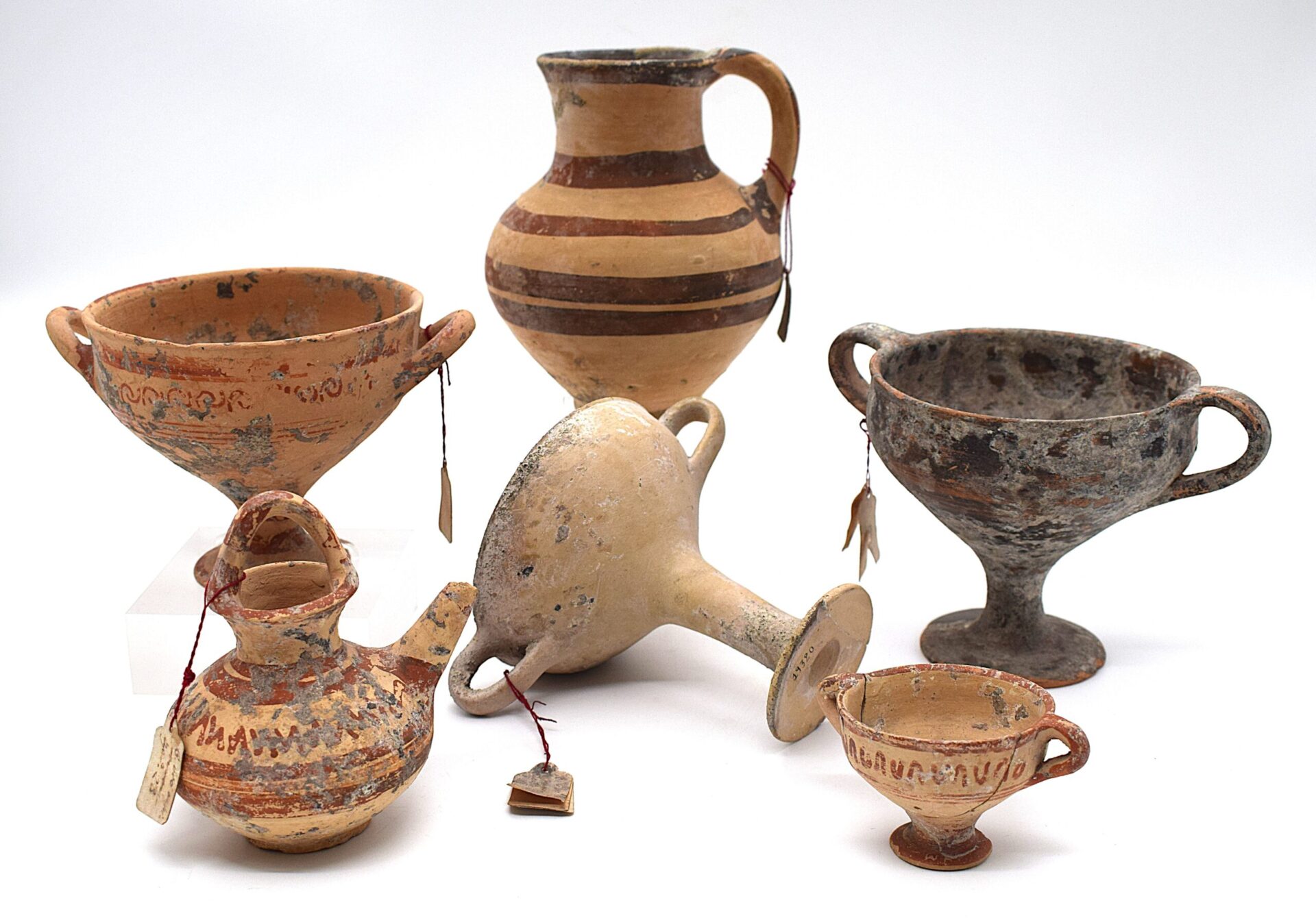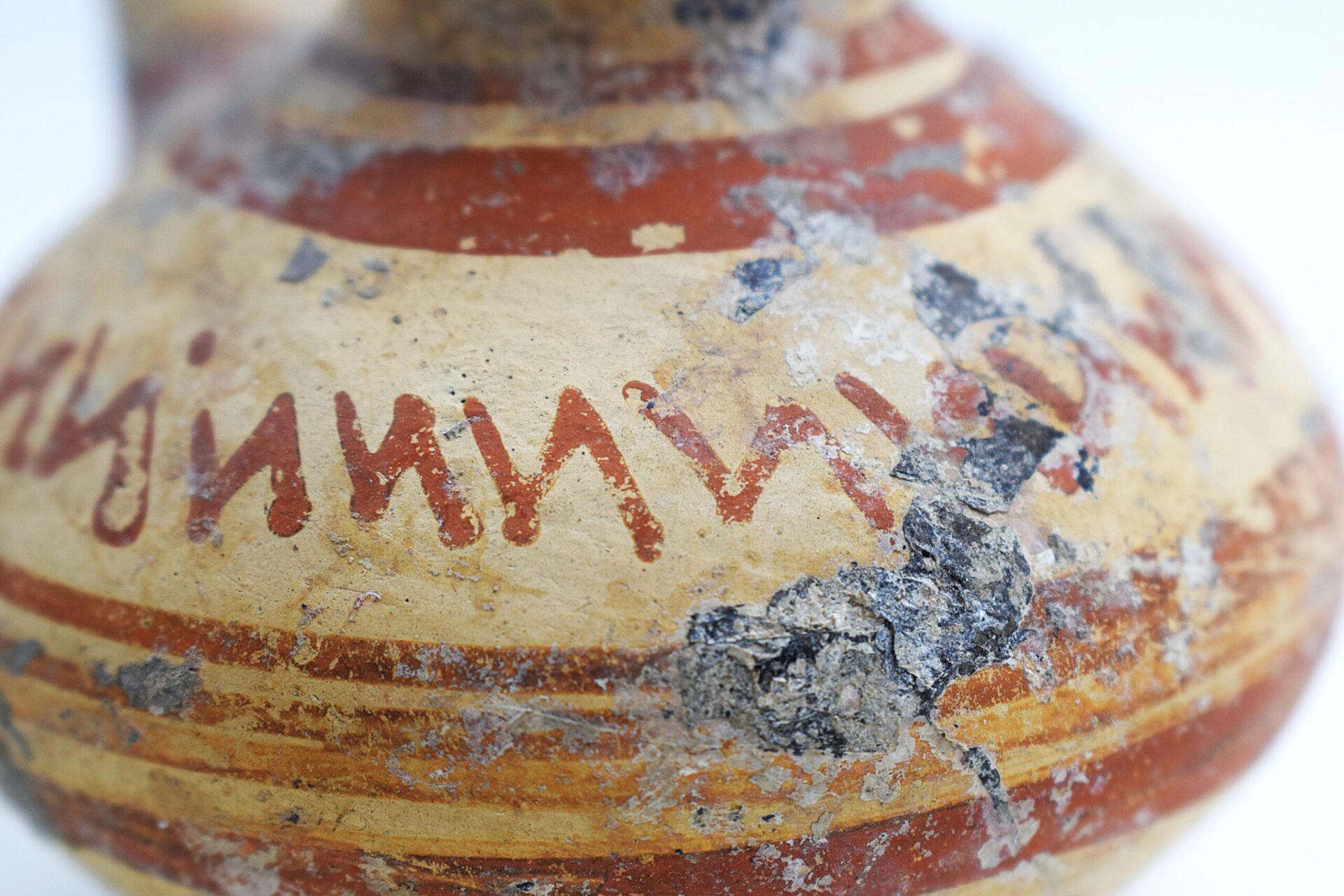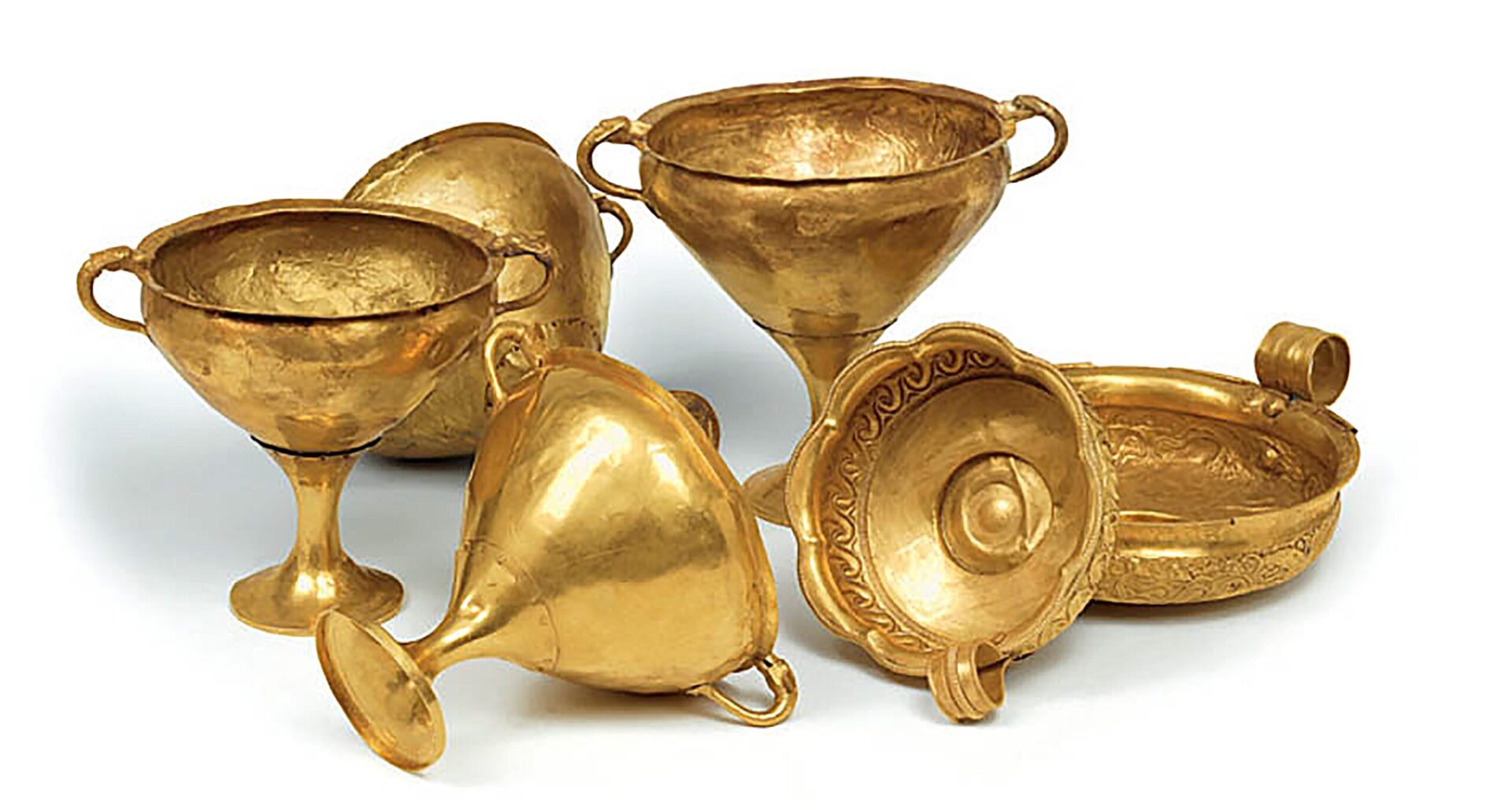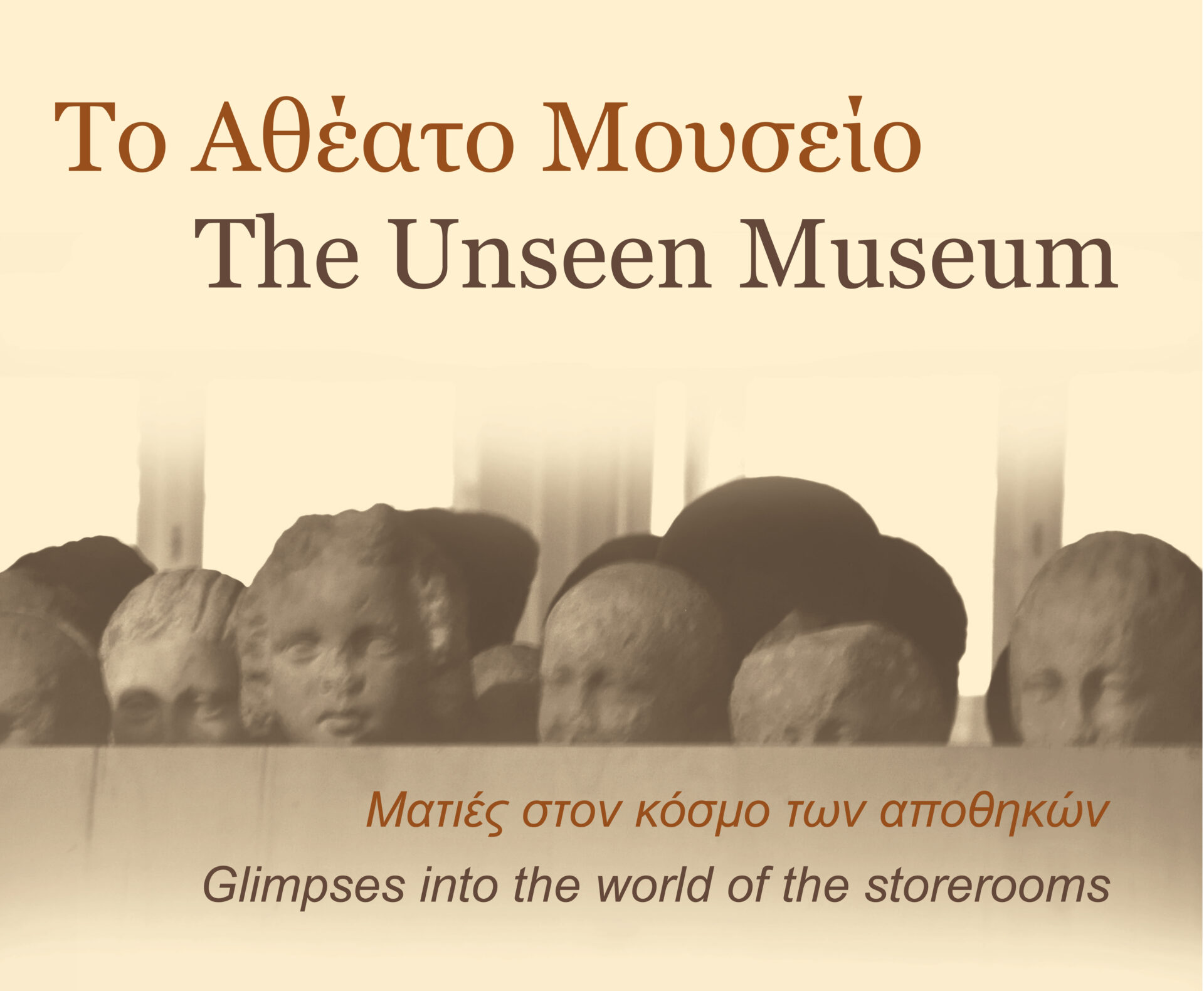Unseen Museum
Mycenaean alchemists
The Unseen Museum is the well-known exhibition project of the Hellenic National Archaeological Museum that brings to the fore antiquities stored in its vaults, away from the visitor’s eyes.
The Unseen Museum presents the “Mycenaean alchemists”. This is a group of Mycenaean ceramic vessels from the late 14th century BCE, which bear traces of tin coating on their surface. The well-known but not particularly common practice of covering ceramic vessels with thin sheets of tin was carried out by specialized craftsmen and aimed at replicating the shine of silver and gold, that is, the magical transformation of certain everyday objects into precious drinking vessels. These vessels were offered as gifts to the dead, bearing the illusion of durability and immortality associated with noble metals. This complex and delicate process, which could be called Mycenaean alchemy, seems to have served the needs and beliefs of Mycenaean theology of death. The “Mycenaean alchemists” are presented in the Altar Hall (Hall 34) from Thursday, March 27, to Monday, May 26, 2025.





